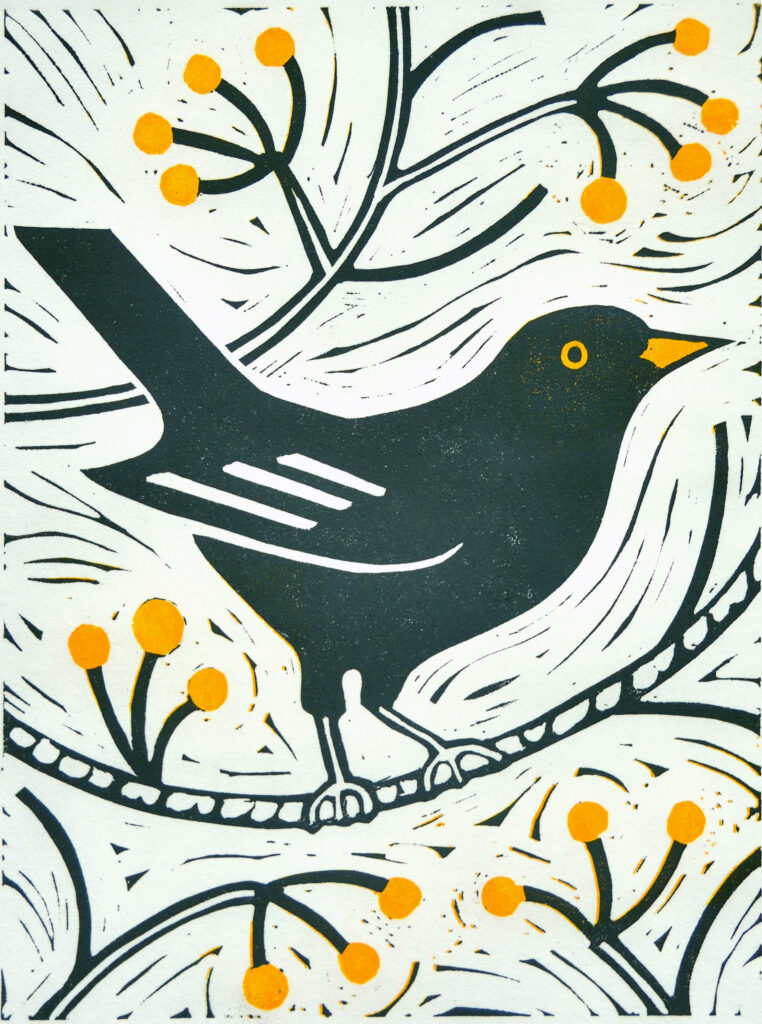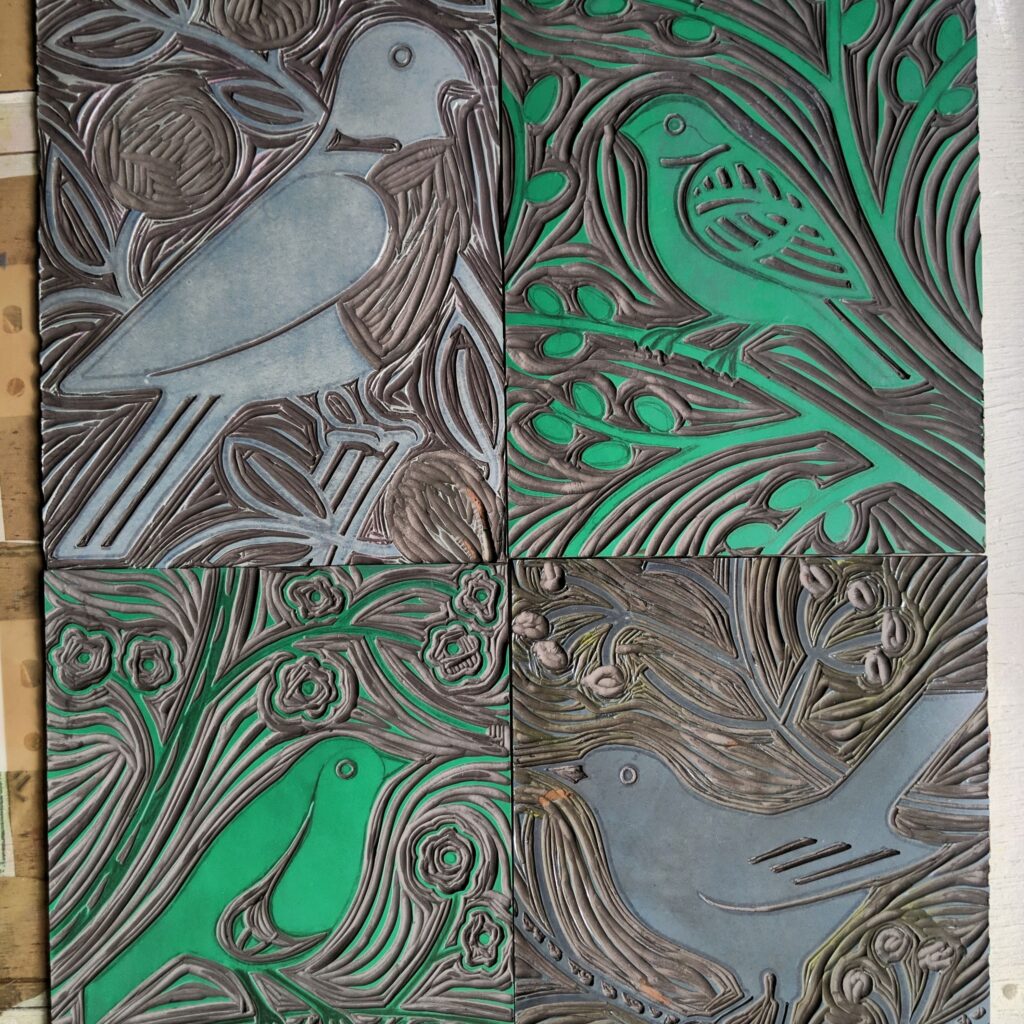
This Spring I have been working on a set of prints about the birds which visit our garden. It started with the blackbird who regularly demands my attention with its chirpy presence as it bobs from branch to branch. I think it is a bird which must be loved by many a printmaker for the inky blackness of its feathers and the cocky silhouette it creates against the sky. From this starting point I was soon drawn to record more of the feathered visitors to our garden. Maybe it is the fact that we are hoping to move house this year that made me want to capture a memory of my favourite birds whom I have grown to love over the last eleven years.
The wood pigeon attracted me next. I was fascinated by the softly graduated tones in his colouring and puzzled over how to separate these out in the reduction process. A reduction print involves taking away sections of lino after each colour is printed and means that you have to work in reverse, building up each colour in order. I enjoy the artistic challenge in reducing a subject down to just two or three colours while still being true to its nature. The wood pigeon received a disc of colour to his belly where in nature there would be a much more subtle blush. It is a stylisation we are familiar with in representations of robins and I felt it would work.

This pair kept me absorbed for some time and I enjoyed their company while ruminating on a second pair which would form a quartet of birds. I chose a robin because of the jolly colour separation, and a sparrow for the beauty in the pattern on their wings. Sadly I had to reject the blue tit on the grounds that there were just too many different colours to work with and it would break the pattern of the two-colour reduction print which marked the set. I’m sure there will be a future place for the blue tit. It is still a very welcome visitor to the garden, and we are hoping a family might take up residence in the nesting box we set up this year.
A background setting was chosen for each bird using plants from the garden or familiar to me through my studies. The accent colour of the plant would be the same accent colour as that of the bird due to the use of only two colours, so that dictated my selection. The blackbird had to have a golden beak so the yellow/red apples of the crabapple tree where it often feeds were an obvious choice. The soft pinks of the wood pigeon suggested roses, and although there are none in flower at this time of year, the blooms of the camellia are very similar in shape and became the floral background in which the pigeon is resting. Tiny spring blossoms for the robin in a red which appears pink when used in small amounts, and the soft grey of pussy willow buds for the sparrow completed the series.

I am pleased to have completed my four garden friends and know that I can now take them with me wherever I go. I can enjoy them from the comfort of my own walls when not sharing the space of the garden with them.
It also pleases me how succinctly they sit within their framework of branches. Observing nature, and particularly birds, teaches me about the art of living harmoniously with ones environment. Whether through camouflage or nest-building, wildlife has a way of finding connections and being at peace. I hope when our family finally moves house we will nestle into place as comfortably as these birds. I think I shall take a leaf out of their wise books and seek out a place to feel at home and in harmony.